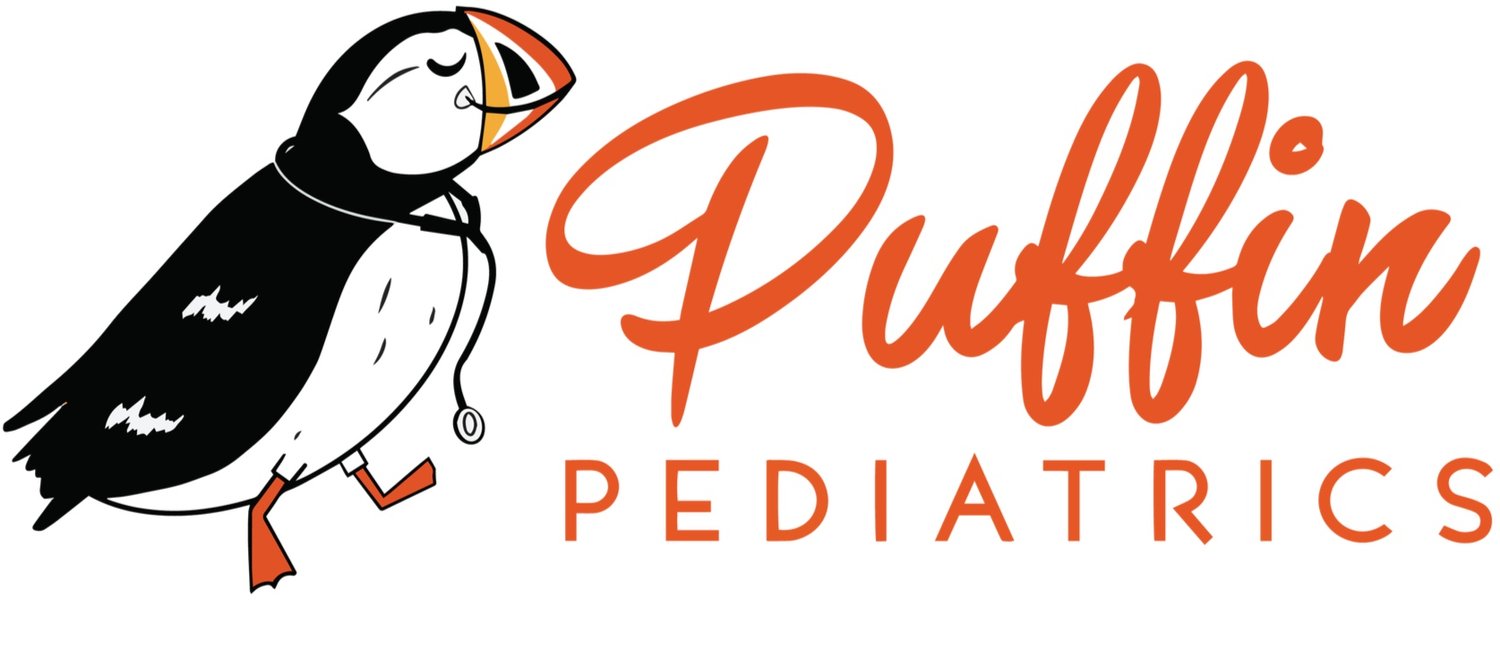Teeth and Teething
Baby’s teeth have minds of their own. They show up when they want, where they want, and how they want with very little rhyme or reason. On average, we can expect baby teeth to start erupting by 6 months of age. But some kids get them super early, and some kids get them later. Most dentists agree that they like to see 1 tooth by 1 year of age. When the teeth come in, they can be crooked or mildly discolored. Once the tooth matures and other teeth join the party, they will straighten their act out.
When teeth are coming in, it’s not super comfy. The most painful time is before you can see the tooth when the gums are just super swollen. It is OK to give Tylenol/acetaminophen (or Advil/Motrin/ibuprofen if your kiddo is over 6 months of age) before bedtime to help with discomfort from their swollen gums while sleeping. Giving these meds for 3-4 nights in a row is fine, but we should take a break on night 4, at the very least, to make sure we are not hiding a fever.
But Dr. Fradkin, doesn’t teething cause a fever? No, no it does not. You can get a slightly elevated temperature during teething, but teething itself should never really cause a fever of 100.4 °F or above.
Why is teething pain so much worse at night? Well, there is nothing to really focus on or distract a baby from their painful mouth when nothing else is going on. In the wee hours of the morning is also when your body does a test run of all its stress-related functions, and when this happens, any inflammation or swelling in the body will worsen, making for even more sore gums at 2-4 in the morning.
To relieve the teething pain during the daytime, we treat it just like any other swelling after a bump or bruise. We try to put ice or cold things on it. We can do this by putting frozen fruit or vegetables in a pacifier pouch to gnaw on. Or go ahead and throw a bagel or whole carrot in the freezer as natural teethers for kids to chew on throughout the day. I also like to apply chamomile tea drops to the gums before bedtime to help with soothing.
Chamomile Tea Drops
Steep chamomile tea bags in hot water for a minute or so like you would normally do to make the tea.
Take the tea bag out of the water and grab an ice cube tray.
Squeeze the tea bag over the ice cube tray to get the concentrated chamomile tea goodness into the wells of the tray.
Place a toothpick in the wells with the liquid and put them in the freezer.
Before bed, you can take the mini chamomile popsicle out and gently rub the gums of your baby with the chamomile popsicle for a few seconds to help decrease swelling and irritation.
We generally do not like gum-numbing gels as if too much of the active ingredient is swallowed it can affect the heart. Similarly, homeopathic drops that contain belladonna (AKA deadly nightshade; I mean c’mon look at that name, that shouldn’t be around babies) should be avoided. These should not be allowed on the shelves as there are numerous reports of babies dying or ending up in intensive care due to cardiac complications from ingesting the belladonna.
Once a tooth pops up, feel free to brush it gently with a baby toothbrush and some water. What is more important than brushing the tooth is being sure to brush the gums, as healthy gums make for healthy teeth.
When kids fall on their faces (which happens quite often), they can knock out or damage a tooth. If a baby tooth gets fully knocked out, that is OK; no need to go to the dentist, as they are not gonna replace a baby tooth. If it is a grown-up tooth, though, grab that tooth, place it in a cup of milk or in a wet paper towel, and head to your closest dentist to get it reattached. If a child chips their baby tooth, have them seen by a dentist to see if they should have a crown placed (if the root/nerve is showing) or not. If it is a grown-up tooth that is chipped, dentists will usually place a crown on it. If the tooth comes out and there is also associated mouth injury to the gum, tongue, or cheek, they should be seen in an emergency room for a full mouth evaluation.

